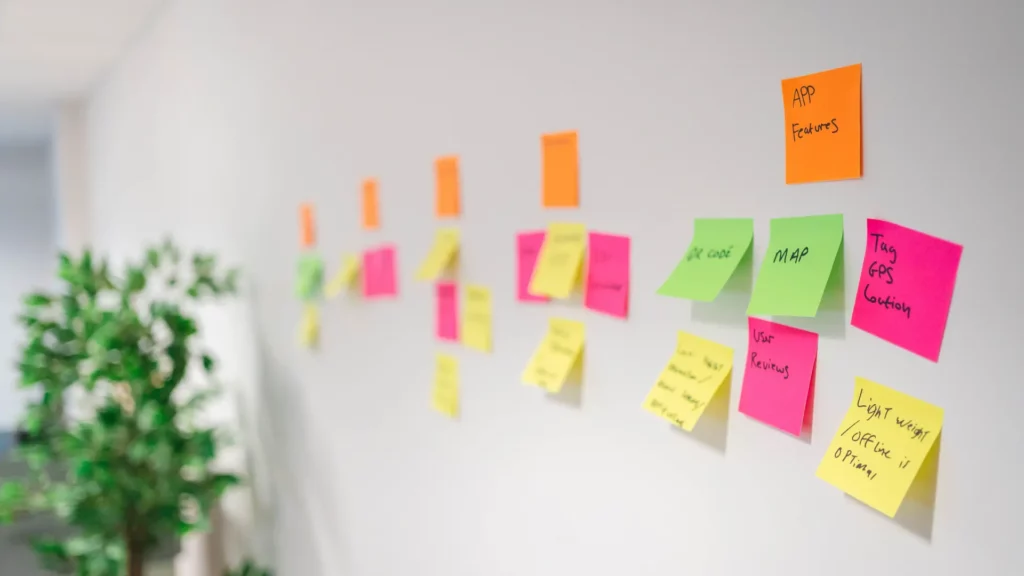
What is UI and how is it different from UX?
What is UI and how is it different from UX? Here we will cover what they mean and how they are vital to the success of anything digital.

Stay in the loop with our latest updates
What is UI and how is it different from UX? Here we will cover what they mean and how they are vital to the success of anything digital.
What is UI and how is it different from UX?
These are two terms that are now used more than ever, and for good reason!
You can develop an idea for a digital product or website, but without an experience that directly relates to it’s intended users and blows their socks off, it’s useless.
Here, we’ll dive into what UI and UX mean and the huge benefits they have on businesses, digital products and websites.
To start with, it’s important to mention that UI and UX work together.
UX stands for User Experience
UX design can be applied to a service, product or website. It essentially can be anything that a user interacts with. However, It’s not about the visual look. UX involves everything from the emotions and attitudes of target users. Let’s dive into the role of a UX designer and what they do to give us more context.
A UX Designer
The purpose of a UX designer is to get to know the end-users of a service, product or website so well, that a digital experience can be designed around their exact requirements, hitting everything that they want and more. A UX designer will carry out lots of research using a range of techniques. Here at hiyield, on a high level, our UX designers carry out these techniques: empathy mapping, user journey mapping and validation.
Empathy mapping is where a UX designer holds a session with key stakeholders. Then together, identifies all of the intended end-users, mapping out what they Think, Feel, Say, See and Hear. This will produce a detailed profile of individual users so that future decisions can be directly related to them.
User mapping and wireframing are where a UX designer maps out the journey’s that the end-users would take throughout a service, product or website. For example, two user types might be a teacher or a student for a school website. Both would land on a home page but will be looking to take a different journey. A student would want to easily find the student portal let’s say, and a teacher would be looking for the teacher portal. A UX designer would take into account every end-user and map out the best possible way to navigate users to find what they want.
Now, I know what you’re thinking. All of these are drawn upon assumptions and could be inaccurate. This is where in UX, validation is vital.
Validation is where UX designers put all of their research and hypotheses into action and look to see if they are correct or not. Whether this is through carrying out interviews, focus groups or survey’s with the target end-users. This could simply involve quizzing them on the findings from empathy mapping and the user journey’s, or to taking one step further, giving the user a prototype to use. This will determine whether an experience is serving their exact needs, or if more work is required to address what they want.
Questions that UX designer would seek the answer:
- Who are the target users?
- What do the users want to gain from the experience?
- What is the user’s pain points?
- What is the easier way to guide the user?
- Is a digital experience enjoyable?
- Is a user getting the right information?
Key points about UX:
- Not about the visuals
- Lot’s of research and techniques
- Create an appropriate experience for the intended users
UI stands for User Interface
UI is the actual interface that a user interacts with. UI includes all aspects of design, such as colour pallets, typography, illustrations, animations, responsive design and spacing.
A UI Designer
A UI designer will create an interface design that works in harmony with research from a UX design, creating a bespoke look and feel for a user journey.
Take Airbnb’s website as an example. On the main home page, the interface instantly solves a users problem of wanting to easily find ‘Places to stay’, something that would come out of a UX design as an important ‘gain’ factor for the users of the website. However, a UI design will convert that information into the best possible visual for a user to achieve it. Notice the easy to read fonts and column layout with easy spacing, and the use of red/pink as an obvious clickable button. This is the role of UI designer.
Research just like UX plays a crucial part in a UI Designer role. This will consist of looking at the visuals of other interfaces already out there, such as competitors. They will gather information about what works, what doesn’t, and if there are consistent characteristics. This paints a picture of what users are currently using and what the users are expecting.
A UI designer will use competitor research as a baseline as well as using UX outcomes. However, designs need to differentiate, or even push the boundaries of what has been done. But, they must only differentiate a design for good reason, or if they can validate their idea. Here at hiyield, as previously mentioned, our UI designers use prototyping to test an interface with end-users, showing if a UI design will work or not.
Questions that UI designer would seek the answer:
- What is the common layout that users are used to?
- Are the interfaces using bold typefaces?
- Are the interfaces responsive for a mobile or tablet?
- Are the interfaces using illustrations, images or icons?
- Are the interfaces using animations?
Key areas of UI:
- All about the visual design that a user interacts with
- Coherent branding that is eye-catching and impactful for purpose
- Must only differentiate for good reason
UI & UX for digital products and websites will maximise success
In a nutshell, UI & UX will maximise the chance of success by creating a digital product or website that their users want based on real evidence.
Although it is more expensive having UI and UX designer in the short term, in the long run, a product or website have a much higher return on investment as all potential major issue will have been addressed before even before starting. This means less future costs!
Also, a product or website will gain a huge amount of trust with users from the get-go if a perfect experience is created.
Let’s be honest, you use a new product or website and find it not to be not up to scratch, you wouldn’t go back!
UI & UX working in harmony
At hiyield, we don’t mess around. Everything we do is for the end-user.
Our UI and UX designers work on all our projects. Websites, digital products and digital transformations, you name it, they are there from the beginning playing a vital role. They are a key stakeholder in our project discovery; a unique process that puts a user at the heart of a project.
You should now have a clear understanding of what both UI and UX is and how they work in harmony with each other. They are the make or break of awesome digital products and websites.
If you are now excited and at the edge of your seat to start a UI & UX project and take your digital presence up a level, we are a team at the ready!

Let’s get started!
Great digital products aren’t just built, they’re co-created. Together, let’s breathe life into your idea, crafting solutions that stand out.
Contact

